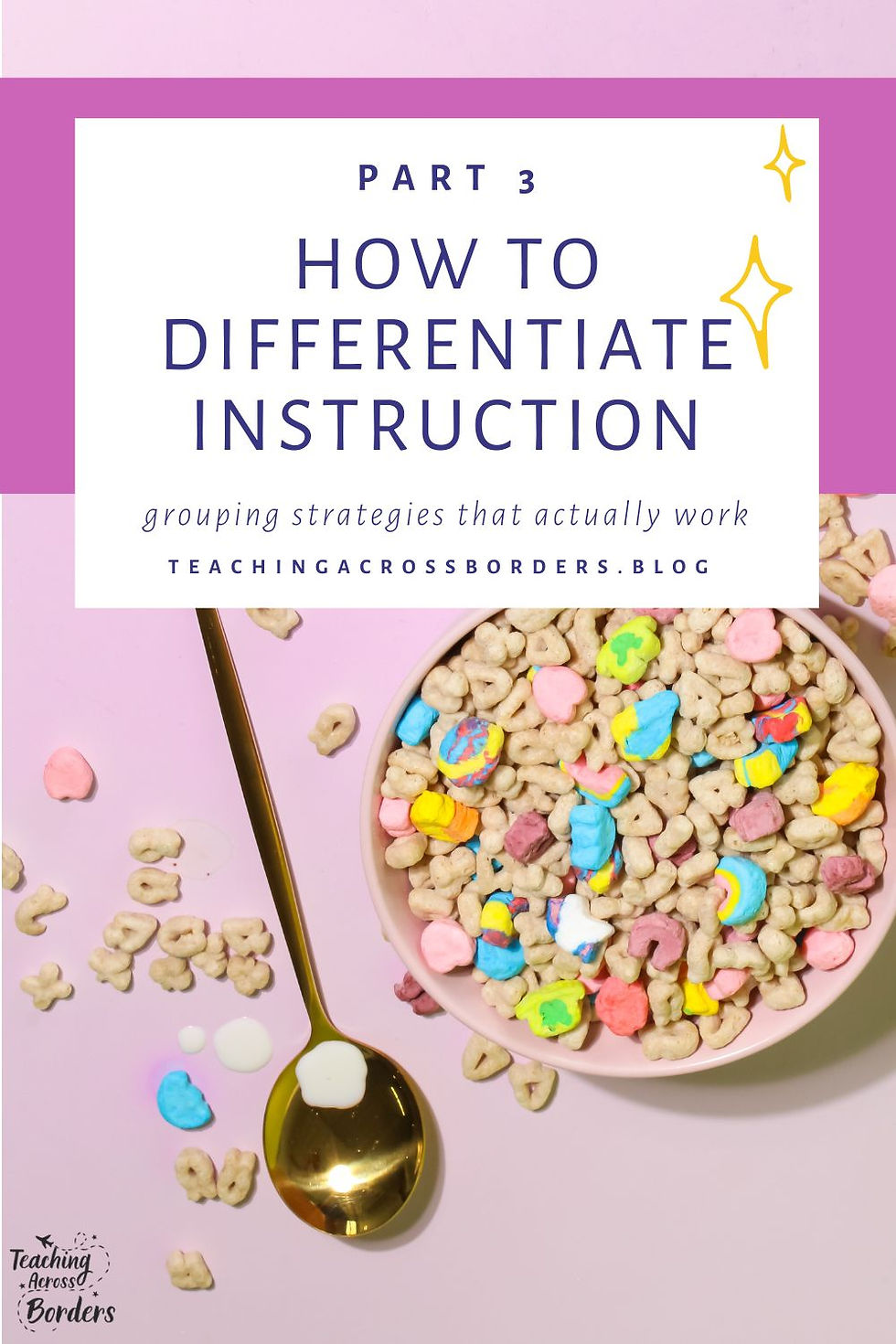Differentiation Part 2: Affordable Tools and Resources for Differentiated Learning
- Laura Swallow

- Mar 9
- 3 min read
Hey there, fellow teacher!

Welcome back to our series on differentiation! In Part 1, we dove into Time-Saving Strategies for Differentiation that can help you streamline your planning and meet your students’ needs without extra stress. Today, I’m excited to share Part 2: Affordable Tools and Resources for Differentiated Learning. These resources are designed to be budget-friendly, low-prep, and effective—so you can create a classroom where every student feels supported and challenged.
Why Affordable Differentiation Tools Matter
Differentiated instruction is key to reaching every learner, but traditional methods can sometimes demand too much time and money. The goal is to work smarter, not harder. By integrating affordable, ready-to-use tools into your classroom, you can keep your lessons engaging and accessible without the extra prep work.
When you have the right resources, you can focus more on teaching and less on planning—making every minute count!
My Top Affordable Tools for Differentiated Learning
1. Graphic Organizers Bundle
A versatile tool that every classroom needs, my Graphic Organizers Bundle is a must-have. These organizers are perfect for helping students break down information visually. Whether it’s for brainstorming, summarizing lessons, or comparing ideas, these templates adapt easily to various subjects and learning levels. They’re designed to be ready-to-use so you can spend more time teaching and less time prepping.

2. Morphology Sets
Understanding language can be a game-changer for your students—especially those learning English as a second language. My Morphology Sets offer a fun and interactive way to explore word structures. With activities ranging from basic word building to more advanced exercises, these sets let you adjust the challenge for different groups, all without the need for extensive lesson reworking.
3. Choice Boards
Empower your students by giving them the freedom to choose how they learn best. Choice Boards are a fantastic resource that provides a menu of activity options tailored to different interests and skill levels. This tool not only boosts engagement but also simplifies your planning process. With everything laid out clearly, you can easily integrate these boards into your daily routine without extra prep.
4. Tiered Assignments
Tiered assignments let you present the same core concept at varying levels of difficulty. By creating one assignment with multiple tiers, you can ensure that each student is challenged appropriately. This approach minimizes extra work on your part—since you’re not designing completely separate activities—and maximizes learning for everyone. It’s an ideal strategy when you need a single resource that caters to different ability levels.
5. Digital Tools & Ready-Made Resources
Don’t underestimate the power of digital tools! Platforms like Google Classroom, Kahoot, Blooket, and Quizizz offer interactive ways to assess and engage your students. They provide instant feedback and are incredibly easy to integrate into your lesson plans. These tools pair wonderfully with physical resources to create a blended learning environment that’s both modern and effective. And best of all, many of these digital options come at little to no cost.
Tips for Seamlessly Integrating These Resources
Plan Flexible Grouping: Use quick assessments, like exit tickets or mini-quizzes, to gauge student needs and group them accordingly. Then, apply resources like tiered assignments or graphic organizers across these groups.
Mix & Match: Blend digital and print resources to keep your lessons dynamic. For example, start with a digital quiz to assess understanding, then transition to a hands-on activity using a morphology set.
Student Choice is Key: When students have options, they take ownership of their learning. Incorporate choice boards to let them pick activities that best suit their learning styles.
Keep It Simple: Focus on resources that are designed to be low-prep. The fewer hours you spend on preparation, the more time you can dedicate to interacting with your students.
Bringing It All Together
Differentiated instruction doesn’t have to be overwhelming or expensive. By using these affordable tools and resources, you can create a rich, supportive learning environment that meets each student’s needs. The key is to find materials that are ready-to-use and adaptable—so you can keep your planning simple while still delivering high-impact lessons.
I hope these ideas inspire you to try out some new strategies in your classroom. If you’re curious to explore more, feel free to check out additional resources in my Teaching Across Borders store. Each product is crafted with busy teachers in mind, so you know you’re getting tools that work as hard as you do.
Have any tips or favorite resources for differentiated instruction? Share your thoughts in the comments below or connect with me on social media—I’d love to hear what’s working in your classroom!
Happy teaching, and here’s to making differentiated learning both affordable and effective!
—Laura, Teaching Across Borders






Comments